A sonographer’s resume is a document that allows you to showcase your relevant qualifications, experience, and other details related to your job search. Knowing the best way to present this information can be challenging to help you land an interview. However, a well-written resume is almost always necessary when applying for a job. An outline serves as an introduction to who you are as a potential employee, including your education, training, and any work experience in the field. To get started on your sonographer resume and cover letter, we’ve put together some great examples and tips for how you can improve yours. A summary for a sonographer is slightly different from one for another job role. The information needs to be tailored appropriately to catch the attention of hiring managers in this industry. Let’s take a look at how!
Sonographer Resume Example
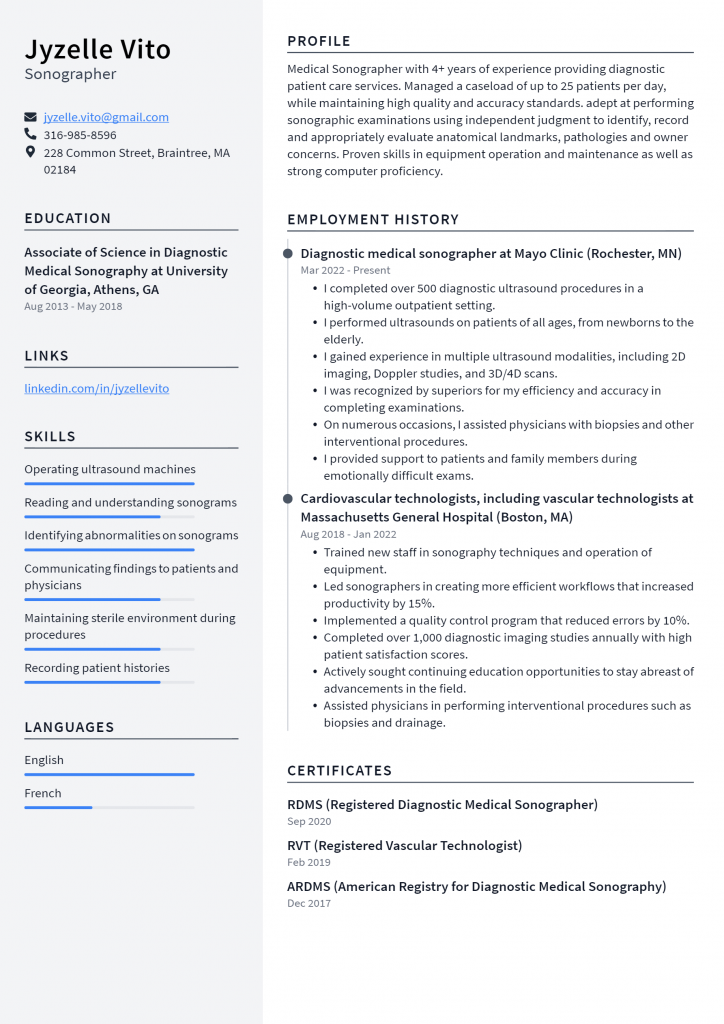
Download This Sonographer Resume as PDF
Radiologic Technologist Resume Example
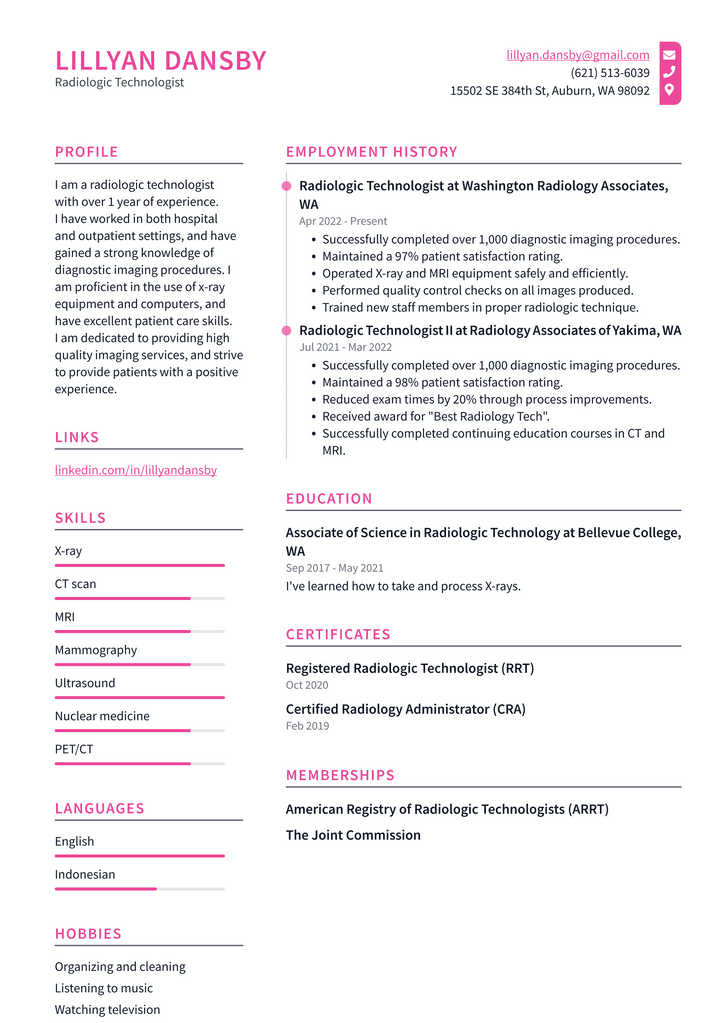
Download This Radiologic Technologist Resume as PDF
Diagnostic Medical Sonographer Resume Example
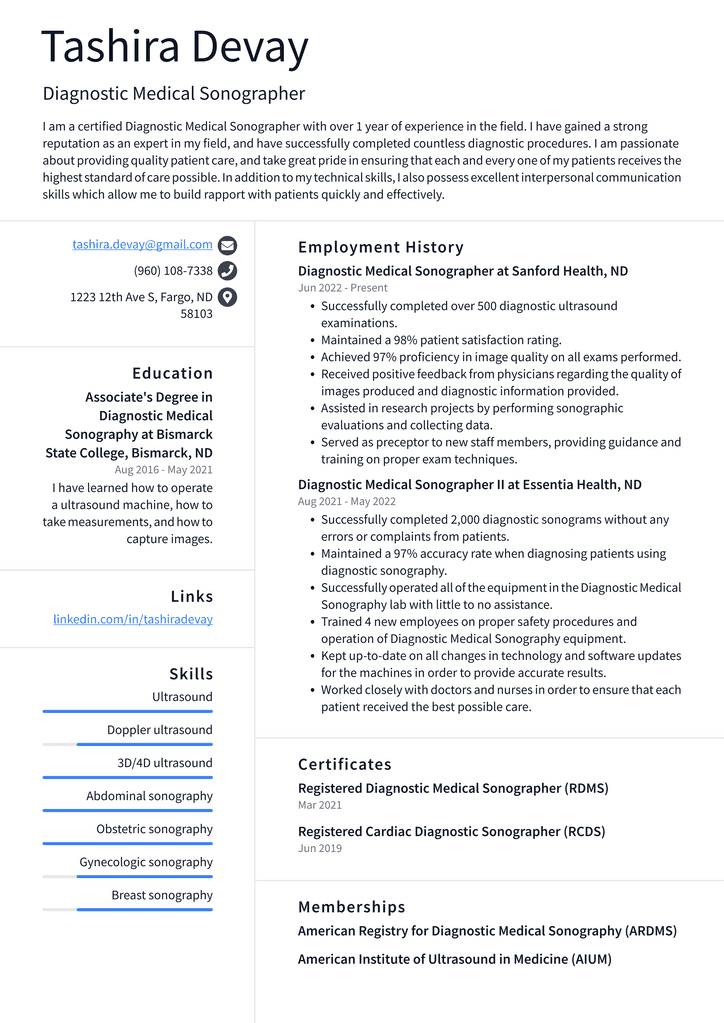
Download This Diagnostic Medical Sonographer Resume as PDF
Cardiovascular Sonographer Resume Example
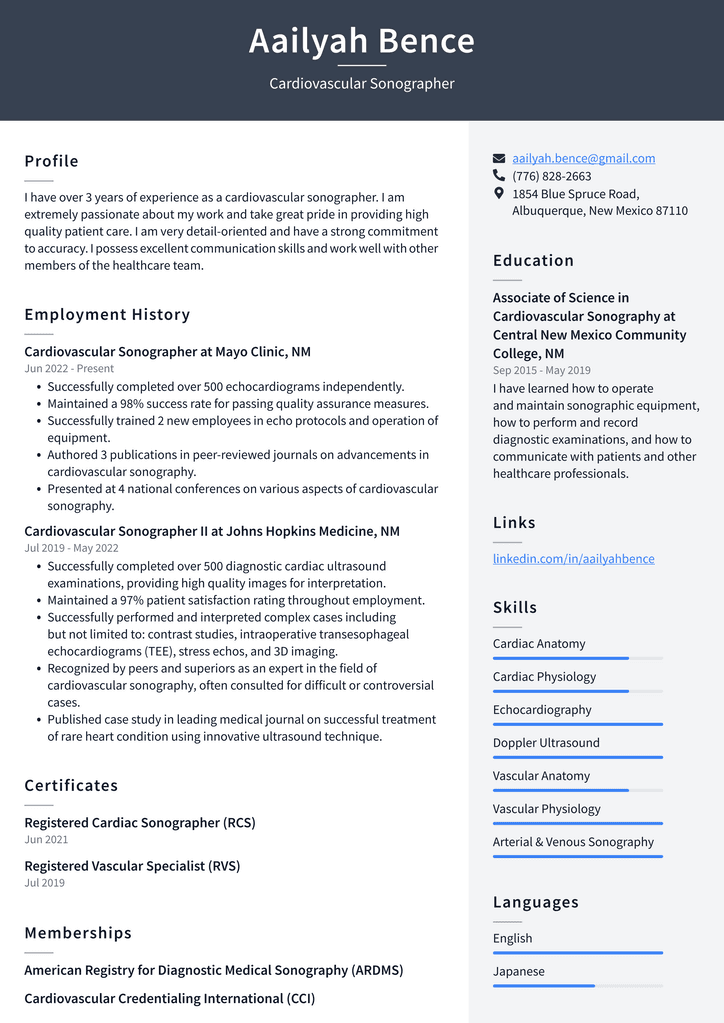
Download This Cardiovascular Sonographer Resume as PDF
Medical Sonographer Resume Example
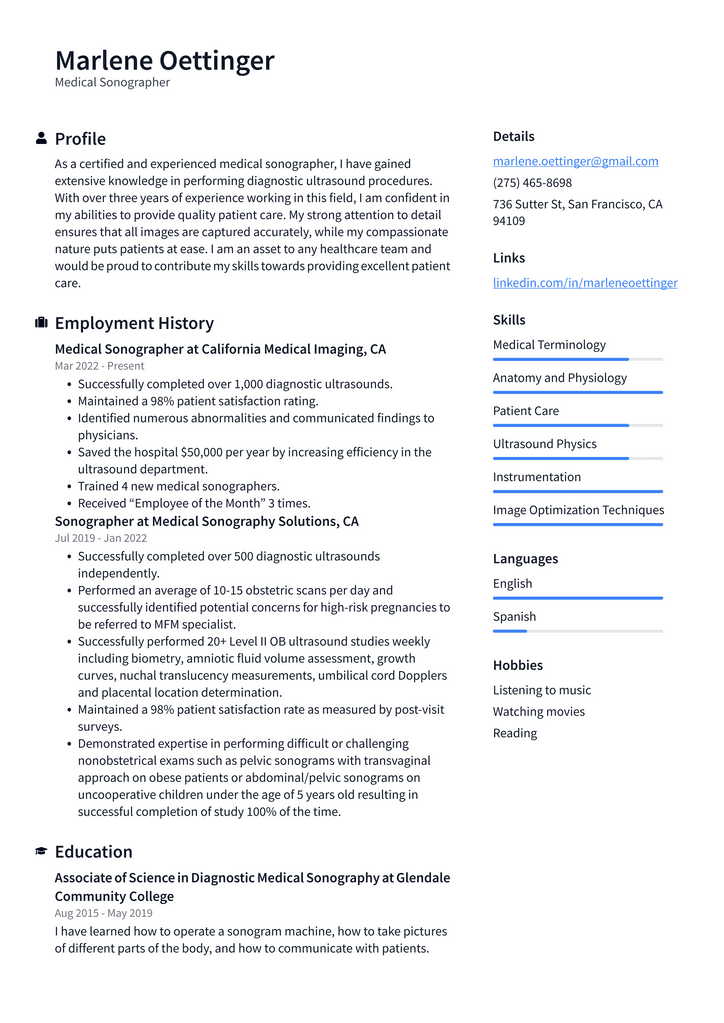
Download This Medical Sonographer Resume as PDF
Ultrasound Technician Resume Example

Download This Ultrasound Technician Resume as PDF
OB/GYN Sonographer Resume Example

Download This OB/GYN Sonographer Resume as PDF
Where to Start?
When you are building a resume, you must first decide which type of resume you want to develop. There are many types of resumes, each with a different aim and format. Some of the most common types of resumes include: – Chronological – a chronological resume is the most common type of resume, and it highlights your experience and education in reverse chronological order. – Functional – a functional resume focuses on your skills and abilities rather than your work history. This type of resume is often used by job seekers with limited experience or long gaps in their employment history. – Combination – a combination resume will include your chronological work history and functional skills and abilities. – Biographical – a biographical resume is a hybrid between a chronological and a functional resume. This resume is often used by people with extensive experience in a particular industry or field.
Formatting Your Resume
After you have determined what type of resume to build, you will need to decide on the best order and layout of information. It’s essential to keep your resume neat. This will make it easier to read and follow. Some important formatting tips you should follow when building a resume include: – Use a consistent font and font size throughout your resume. A serif font (fonts with small lines or tails at the end of each letter) is a more traditional and formal font, while a sans serif font is a modern and professional font. – Use white paper. This will make your resume look more professional and clean. – Use paragraph breaks instead of indenting each new section. This will keep the information easier to follow. – Include a header with your name, contact information, and the date. This will help with organization and readability. – Use bullet points to highlight your key achievements and qualifications. This will keep your resume easy to read.
Key Skills and Abilities
As a sonographer, you must prove that you have the specific skills and abilities needed for the job. You will likely have to provide a list of technical and specialized skills, such as the ones listed below: – Abdominal/Voiding Cystourethrography – the ability to perform an ultrasound to check for abnormalities and blockages in the bladder and urethra. – Ultrasound – is the medical imaging technique that uses high-frequency sound waves to create images of the inside of your body. – CT Imaging – is a medical imaging technique that uses X-rays and computer software to generate detailed images of the internal organs and bones. – MR Imaging – the medical imaging technique that uses a strong magnetic field and radio waves to produce detailed images of organs and soft tissues within the body.
Education Details
In this part of your resume, you will want to include your highest level of education. You should also include any certification bodies or associations you may have been a part of during your studies. For example, you might have been a part of the student union during your undergrad years. This is a great detail to include. If you have a bachelor’s degree, you should also include the institution’s name, degree type, and the year you graduated. It’s also a good idea to include your GPA if it is higher than 3.0. If you have completed any advanced degrees, you will want to include the institution’s name, degree type, and the year you graduated. You may also want to include any specialized coursework you completed while pursuing these degrees.
Your Work Experience
This section of your resume will likely be the longest. This is where you will want to include any work experience you have. You may want to include a chronological list of your jobs, starting with the most recent. Or, you may want to group this information by type of work (i.e., hospitals, clinics, etc.). You should include the company’s name, title, and dates employed at each job. You should also have other relevant details, such as additional responsibilities or projects you worked on while employed at each company.
Conclusion
At the end of your resume, you should include a short conclusion. This is the perfect place to have the skills and qualifications that hiring managers want. You can also use this section to remind hiring managers that you are available for an interview. If you follow the tips and examples of building a sonographer resume, you will be on your way to creating an impressive resume. Remember, your resume is the first thing hiring managers will see, so you must put extra effort into building a strong one.